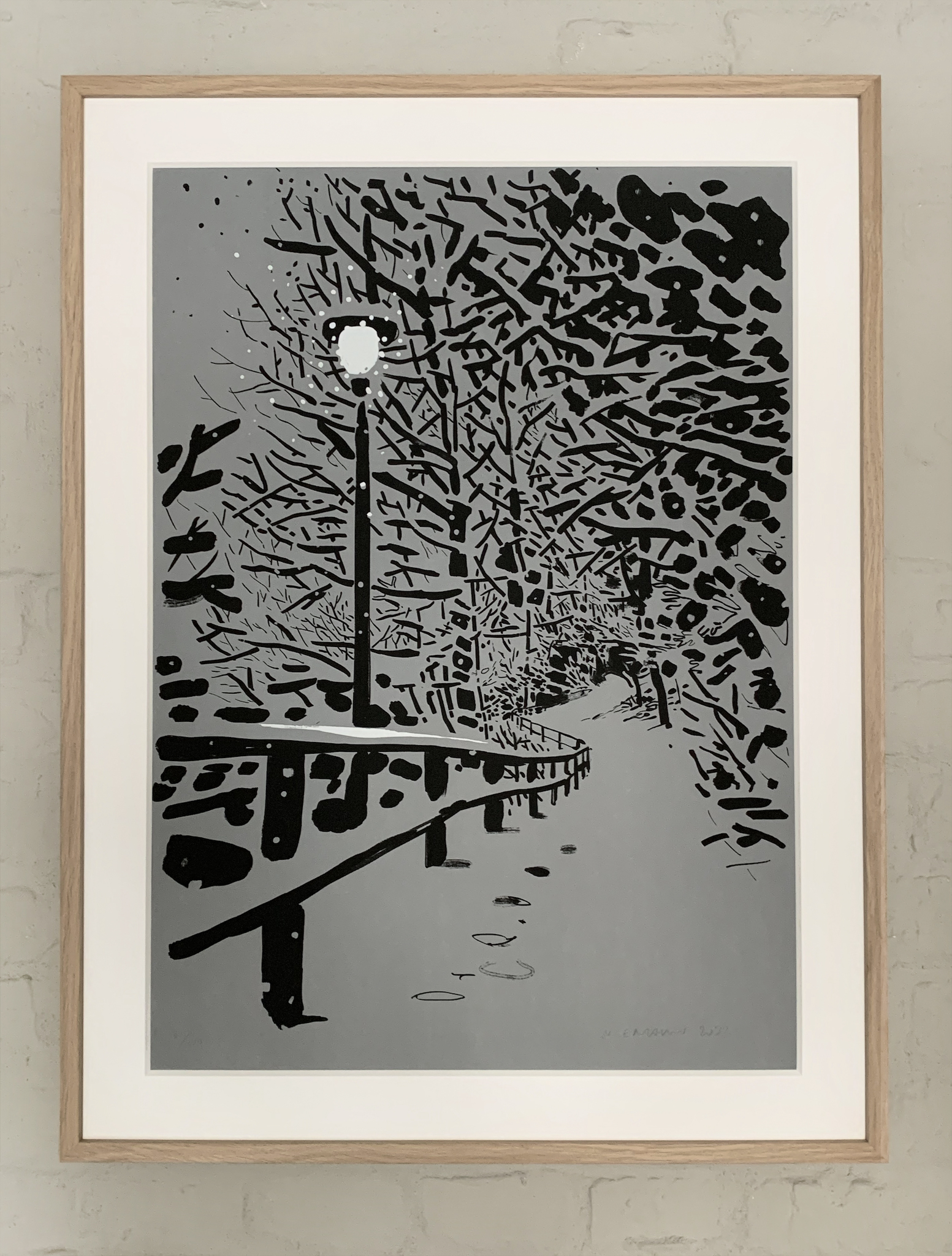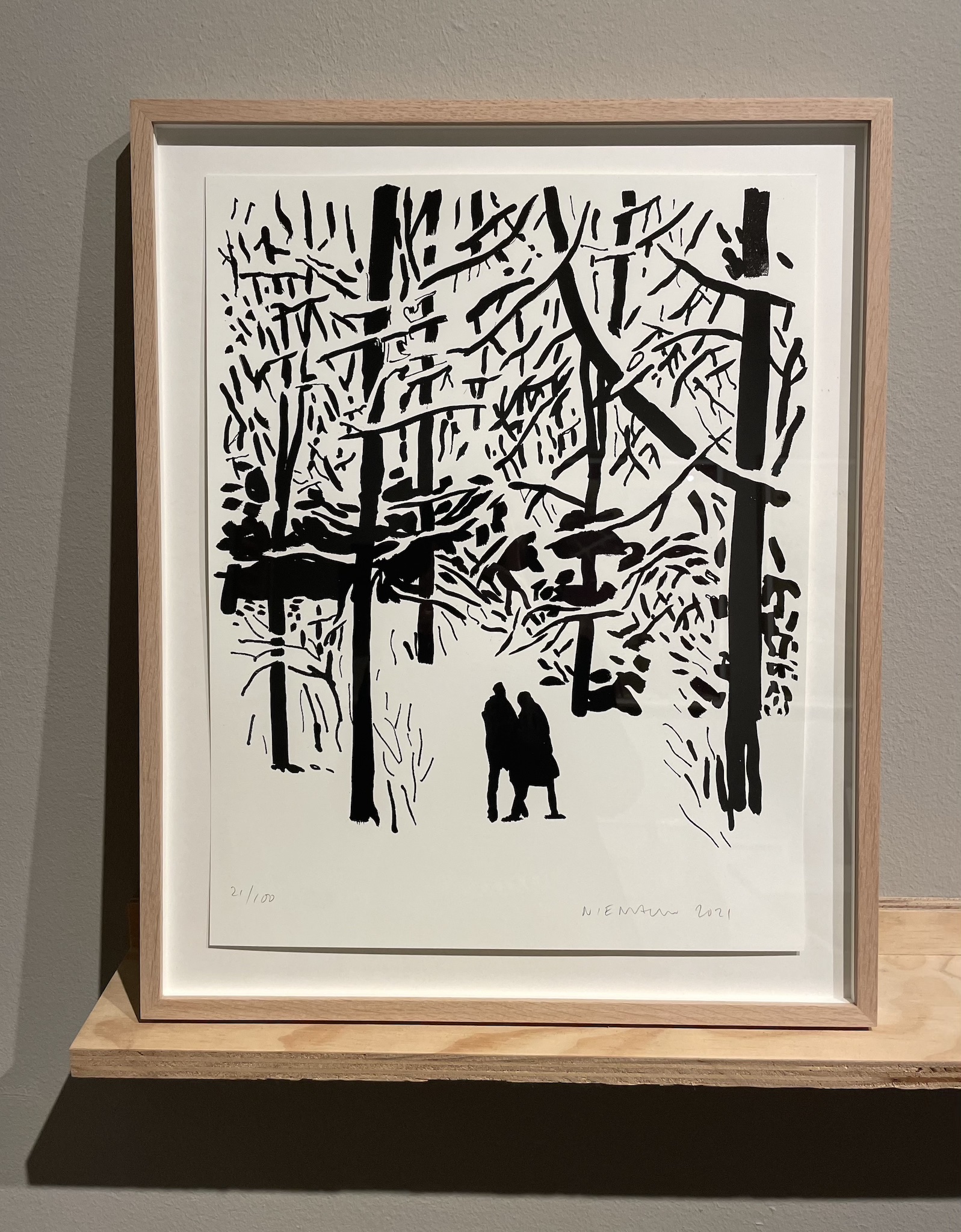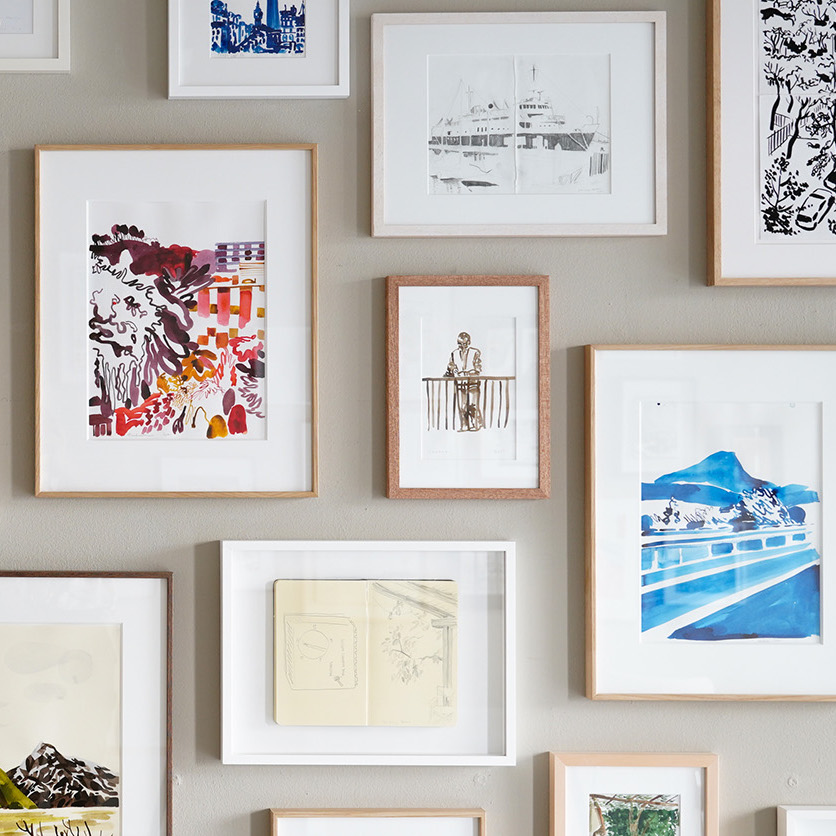Dear customer,
Thank you for your purchase! We collected some information on arthandling, storage, unpacking, waste disposal and framing. If you have any further questions please contact us.
ARTHANDLING & STORAGE
Each artwork is individually and securely packed with several protective layers. Large format prints are packed in sturdy cardboard tubes, small prints and drawings are shipped flat, protected by very strong cardboard covers.
As soon as you receive the print please check if everything arrived in good condition. In case the package has been damaged during the shipment, please let us know immediately and take pictures to document the damages. If you wait too long to get in touch the insurance claim will be forfeited.
Only unpack your artwork on a clean surface for example a large table or on a carpet to avoid scratches or bends. If your print comes in a tube, we strongly recommend to unpack the artwork as soon as possible or at least not storing it longer than 7 days.
When unpacking the work, make sure to wash your hands thoroughly or put on cotton or surgical gloves before touching the paper (the oils and contaminants on your hands will attack the print and leave marks on the paper). Always lift the print by opposite corners, letting the print bow a little in the middle. Be careful while lifting because prints are vulnerable to crescent moon-shaped creases. Try no to touch the image area of the print.
We would recommend framing the prints as soon as possible. Storing prints in frames is always the safest option. If you need to store loose prints always store them unrolled in a horizontal position. Two prints should never be stored in direct contact facing each other. If you need to stack them, try dividing them with a clean sheet of paper. Protect the prints from smoke, fumes, touch or any other damaging influences.
UNPACKING - TUBE
Open the plastic cap of the tube and take out the thank you note and the crumbled silk paper
Afterwards grasp the edge of the plastic bag (every print is packed in a transparent plastic bag) and slowly pull out the rolled silkscreen out of the tube
Lay it down the table or flat and clean surface and unroll the artwork carefully - let it slowly unfold itself (medium format prints are rolled on the back to ensure easier laying out
Open the plastic bag and grab the print carefully with one hand and pull it out slowly while holding the bag with your other hand - and don’t forget to take out the artwork declaration in case you didn’t pull it out together with the print
Et voilà - you unpacked your new artwork - enjoy!
UNPACKING - FLAT PACKAGING
Remove the tape and open the cardboard packaging
Take out the bookbinding cardboard and try to remove the tape manually or take a sharp object like a cutter and slowly - without inserting it too deep - cut open the sides and put the top cardboard aside
The print is attached to the bottom cardboard with adhesive corners. Please grasp the print wrapped in a plastic bag and carefully pull it up and out of the flaps of the adhesive corners.
Put the Print on the table or flat and clean surface and remove the adhesive tape on the plastic bag carefully. Open the plastic bag and grab the print carefully with one hand and pull it out slowly while holding the bag with your other hand - and don’t forget to take out the artwork declaration in case you didn’t pull it out together with the print
Et voilà - you unpacked your new artwork - enjoy!
WASTE DISPOSAL
We are trying to work for a more sustainable future. We hope you will do the same: Our products are packed with different materials - so please separate the packaging waste from your order and dispose of it properly.
We urge you to separate paper packaging from plastic packaging and feed them into the respective recycling cycles. (This also means removing the plastic caps from the shipping tubes with pliers or similar).
Thank you for your help - separate waste collection is your contribution to climate protection.
FRAMING
Since safe shipping of glass frames is prohibitively expensive, we only offer unframed work in our online shop. We receive a lot of requests regarding how to frame the prints, we’re sorry to disappoint you but there is no right answer. Framing artworks is an artform itself and depends on the print itself, on your personal taste and the surroundings of the space you are hanging in. If only a single picture hangs on a wall, the frame can be perfectly matched to the one motif. However, when framing a series, the frame must fit all motifs. In a wall design where different motifs are related, the frame must harmonize with all pictures. Here, a restrained frame is recommended, which provides visual calm as a constant. Classic colors are a good choice.
To give you some guidance regarding the framing of your print, here are some basic recommendations:
For custom framing use a professional framer in your neighborhood. Ask for museum glass for maximum protection of your artwork. This specially coated glass virtually eliminates reflections, blocks most UV-rays and preserves the original colours for a long time.
With works on paper you can choose between different techniques:
1. A mat-board frames the work within the frame and makes sure the image doesn't touch the glass, therefore the image surface is optimally protected. The distance between the glass and the picture surface is increased and a depth effect is created, which draws even more attention to the picture. The passe-partout thus separates the picture even more from its environment and the frame, without itself being too conspicuous (with the right choice of color).


2. To give the print a more object-like character, you can choose to mount the work floating on a mounting board. The art is attached to the back a few centimetres away from the edges, creating the impression of the art floating in the frame box. This requires an object frame (deeper than a regular frame), to make sure the artwork doesn't touch the glass.
The color of the frame plays just as important a role in perception as the material. The frame should direct the eye to the motif and must not draw too much attention to itself. The choice of color is a matter of feeling and taste and is very difficult to describe with a simple rule of thumb. A wooden frame achieves a warm and soft effect. An aluminum frame, on the other hand, looks rather noble and modern.
Our favourite floating frame specs are oak wood, with the inside of the frame made from the same board as the back.

RETURNS
We want you to be 100% happy and excited about your artwork. Should you not be fully satisfied with your purchase, you can return the artwork within 14 days after you received the shipment. It is necessary to withdraw from your contract via postal mail or e-mail.
It is most important that you send back the print in the original packaging and in an undamaged condition via the initial shipping company. Make sure to claim it as “return of goods”, since that is the easiest way to bring it back to us without paying import taxes and customs.
When packing the work, make sure to wash your hands thoroughly or put on cotton or surgical gloves before touching the paper (the oils and contaminants on your hands will attack the print and leave marks on the paper). Always lift the print by opposite corners, letting the print bow a little in the middle. Be careful while lifting because prints are vulnerable to crescent moon-shaped creases. Try no to touch the image area of the print.
Packing Prints in Tubes for Return
1. Put the print and certificate back into the transparent plastic bag.
2. Turn the packed print within the plastic bag face down on the table.
3. Take the ends of the print and pull them over, creating a soft arch. Do not fold the artwork to begin your roll, as this will damage the print. Roll the print slowly from one end to the other until you have a tube (roughly 10 cm in diameter). Be careful not to roll the print too tight and that the protective bag has as few wrinkles as possible. If you see prominent bends or folds in the bag, release the print, and roll more loosely.
4. Grab the assigned shipping tube. To prevent the print from shifting inside the tube, place a piece of crumpled silk paper in the bottom.
5. Place the print inside the tube and allow it to unravel as it enters.
6. Close the open side of the tube with another piece of crumbed silk paper and close the plastic cap.
7. Fasten it well with tape.
Packing Prints in Flat Packages for Return
1. Put the print and certificate carefully back into the transparent plastic bag and fold the bag to the size of the print.
2. Use tape to fix the print in the bag to the book binding cardboard on all sides.
3. Place the second book binding cardboard on top and tape the edges as tightly as possible.
4. Put the fastened book binding boards back into the outer cardboard packaging and insert the flap. Fasten it well with tape.